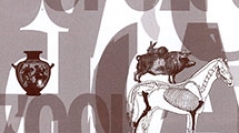

 Anthropozoologica
48 (2) - Pages 487-505
Anthropozoologica
48 (2) - Pages 487-505Fourteen animal species have been identified in Mochica tombs (100-800 A.D.). Among them the discovery of amphisbaenids, a group of reptiles known in South America as “culebras de dos cabezas” (two-headed snakes), stands as a new fact. Rests of Amphisbaena sp., in particular A. occidentalis, the only species actually present in this area, were found in five tombs of the Uhle’s Platform at Huacas de Moche site. This constitutes the first occurrence of these reptiles in Precolumbian archaeological sites from the western slope of the Andean Cordillera. The amphisbaenids were discovered in jars sitting by the side of the dead, indicating that they were intentional deposits and not intrusive vestiges. Amphisbaenids offerings are also known in North-West Argentina, in the Ciénaga culture (2000-1400 BP), and during the periods of Regional Development, Inca and Hispano-Natives (800-250 BP). This kind of offerings thus does not constitute an isolated cultural
phenomenon, but should clearly be regarded within a wider temporal and space context. The Mochica iconographic register brings additional details and seems to indicate that these animals could have a link with death and sacrifice, but also with the Milky Way. The discovery of these taxa brings new data for understanding their ritual role and symbolic function in Mochica culture tombs.
Zooarchaeology, Amphisbaena, reptile, funerary rites, Mochica culture, Peru